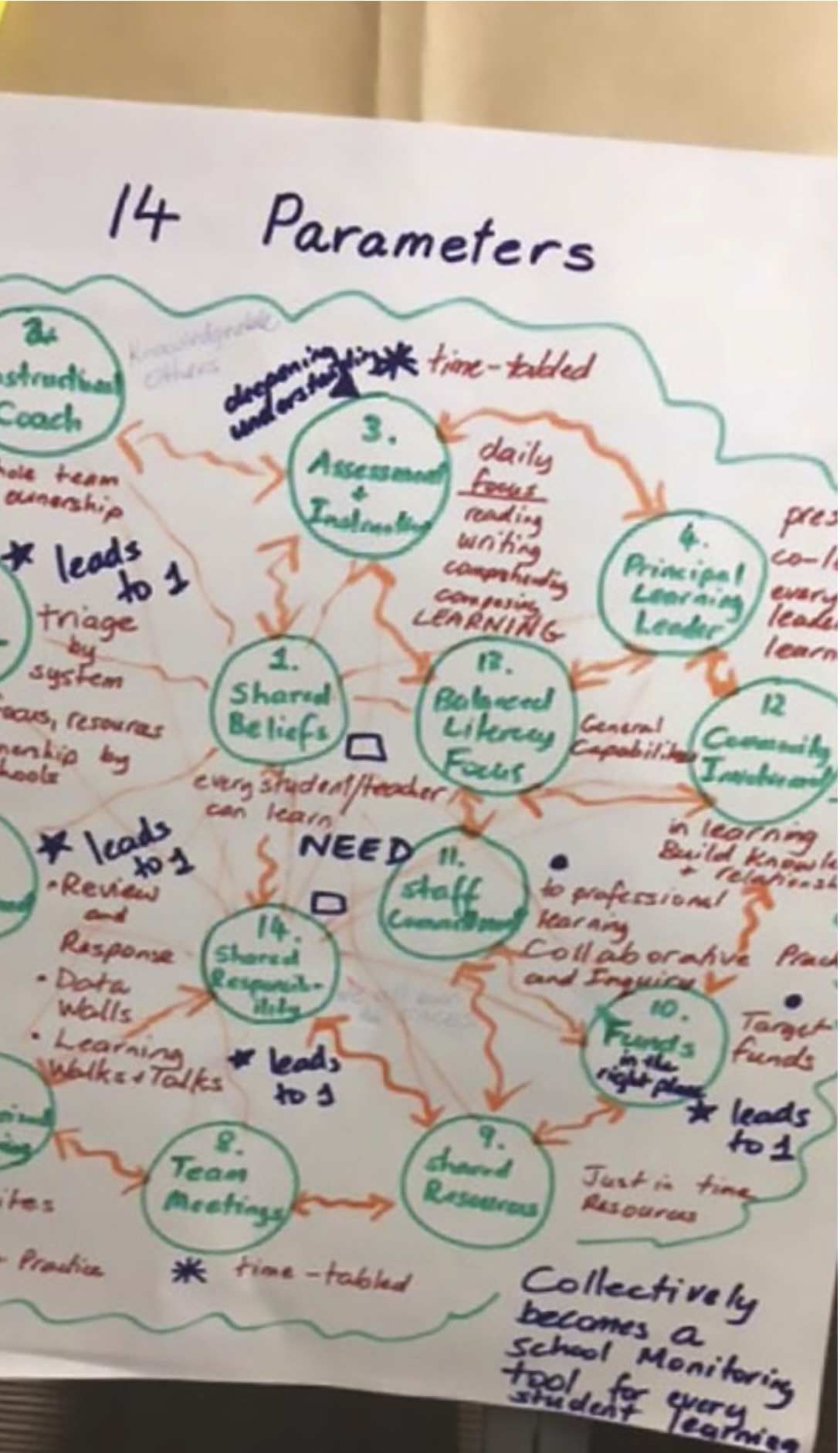AEL Articles
No teacher left behind: The way forward to curb the teacher shortage crisis
Dr Janelle Wills, International Consultant and Author; accredited CLARITY Learning Suite (CLS) Consultant
Dr Lyn Sharratt, Associate, University of Toronto, Ontario Institute for Studies in Education; Honorary Fellow, University of Melbourne, Graduate School of Education, Australia; International Practitioner, Consultant and Author

It has become critical to address the problem of Australian teacher shortages. The Australian Government has declared the teacher shortage an “unprecedented” challenge projecting a shortfall of more than 4,000 high school teachers by 2025 (Welch, 2022). However, shortages are being felt across the board, especially in rural and remote schools prompting a targeted national campaign to raise the status and value the role of the teaching profession. But it could be a case of too little, too late. Alarmingly, Australian Teacher Workforce Data (ATWD) show an increasing number of teachers intending to leave the profession. The most recently published report indicates that 35% of teachers were planning to leave before retirement (Australian Institute for Teaching and School Leadership, 2023). Younger teachers were more unsure about staying in the profession until retirement, with 48% of 25-year-olds and 39% of 30-year-olds saying they wanted to leave (Australian Institute for Teaching and School Leadership, 2023). Furthermore, the intentions to leave were more likely to be immediate (Australian Institute for Teaching and School Leadership, 2023). Different estimates for early career teacher attrition have been made in Australia, with some suggesting that up to 50% of teachers leave in the first five years. This article examines some of the causes of this trend and some potential solutions to keep more teachers in the education workforce. It explores the evidence- proven 14 Parameters of System and School Improvement developed by Lyn Sharratt and Michael Fullan (2009, 2012, 2022) and how these leadership stratagems address many of the issues that teachers identify for leaving the workforce.
Teacher attrition has negative effects on both students and schools. A constantly changing teaching force affects the consistency and quality of instruction, the formation of trusting relationships, and the feeling of belonging and community in schools (Amitai & Van Houtte, 2022). Teacher attrition also adds significant costs to the education system. It requires the hiring, training, and orientation of new teachers, and it results in the irreplaceable loss of individual expertise and experience. This includes loss of the school and system history of leaving teachers which is detrimental to sustaining system and school improvement. These and other effects of attrition create more stress on principals, deputies, and assistant principals across all sectors, who need to help by sharing in the increased classroom and school “management” workload (Stringer, 2024). While it is difficult when a teacher at any experience level leaves, when an early-career teacher leaves, the school misses out on that teacher’s potential, fresh ideas, and, often a future school leader (Brandenburg et al., 2024).
In a recent article “I left the teaching profession ... and this is what I am doing now: A national study of teacher attrition” published in The Australian Educational Researcher, Brandenburg et al. (2024) outline the reasons cited by survey participants for leaving. Their study is important because it surveyed teachers who have already left the profession, not just intending to leave, which has been the focus of previous studies. The main reasons for leaving cited by former teachers in this study and previous studies, include school leadership, workload, workplace conditions including lack of collegial support and professional learning opportunities, student behaviour, lack of personal satisfaction and lack of respect and professional acknowledgement (Brandenburg et al., 2024). The impost “of unceasing change, new initiatives, new programs, new data reporting” (n.p.) was also cited, the effects of which we have labelled “change fatigue.” It is important to recognise the interdependence of attrition factors and what participants typically referred to as a set of factors that contributed to their decision to leave rather than just a single factor. Consequently, a multifaceted approach is required if we are to address these unacceptable trends. One such approach of system and school improvement by Sharratt and Fullan (2009, 2012, 2022) incorporates 14 parameters proven to build capacity for professional learning and system learning.
For many teachers surveyed in the study conducted by Brandenburg and colleagues (2024), leaving teaching meant leaving a profession they loved, with many expressing deep sadness at leaving their students behind. One participant stated, “The hardest thing was knowing I was walking away from making a difference in the lives of young people, each and every day” (Brandenburg, et al., 2024, n.p.). These sentiments sit at the very heart of Parameter #1 of the Sharratt and Fullan framework (2009, 2012, 2022) which refers to the driving vision that establishes shared beliefs and understandings. Parameter #1 is based on a deep belief that all students can achieve high standards given the right time and the right support, that leaders believe and expect that all teachers can learn to teach to high standards when given the right assistance, and ultimately that leaders, teachers and students can articulate why they do what they do and why they lead, teach, and learn the way they do (Sharratt, 2019).
- Shared beliefs and understandings
- All students can achieve high standards given the right time and the right support.
- All teachers can teach to high standards given time and the right assistance.
- High expectations and early and ongoing intervention are essential.
- All leaders, teachers, and students can articulate what they do and why they lead, teach, and learn the way they do. (Adapted from Hill & Crévola, 1999)
- Embedded Knowledgeable Others
- Quality assessment informs instruction
- Principal as lead learner
- Early and ongoing intervention
- Case management approach
- Focused Professional Learning at staff meetings
- In-school meetings—collaborative assessment of student work
- Book rooms of leveled books and multi-modal resources
- Allocation of system and school budgets for learning
- Collaborative Inquiry—a whole-system approach
- Parental and community involvement
- Cross-curricular literacy connections
- Shared responsibility and accountability
- We all own all the FACES!
“No one can play a symphony; it takes an orchestra. No one can teach in isolation; it takes a community to provide the support and structures required to ensure equity and excellence so that all learners (and their teachers) thrive.”
The “bookend” and the “glue” of the framework is Parameter #14 where everyone is responsible and accountable for every learner. Intentional procedures and processes encourage system- and school- wide shared responsibility and ownership for student, teacher, and leader learning. Teachers are no longer left to work in isolation but have support through collaborative inquiry processes, access to Knowledgeable Others (KOs), a problem-solving forum (the Case Management Meeting) to support students they are concerned about and build capacity through targeted professional learning. It has been found that schools that foster such a culture of collaboration and differentiated professional learning opportunities to improve professional skills can retain teachers more effectively, and teachers are more likely to remain if they experience a sense of competence, recognition, and satisfaction (Stringer, 2024). Further, it creates collective efficacy as teachers work together to impact student learning which has been identified as the single most influential driver of student achievement (Donohoo, 2017). No one can play a symphony; it takes an orchestra. No one can teach in isolation; it takes a community to provide the support and structures required to ensure equity and excellence so that all learners (and their teachers) thrive.
The first author of this article has used the 14 Parameters of System and School Improvement to indicate the ways that research by Sharratt and Fullan (2009, 2012, 2022) can reduce the exodus from the teaching profession if implemented by leaders who have fidelity to the framework (Figure 1) and lead with Knowledgeable Others (KOs) at their sides ... that is, KOs who are consistent, persistent and insistent in seeing quality assessment that informs instruction surrounded by the “third teacher” in every classroom. After parents and teachers, the classroom environment is the “third teacher” (Sharratt, 2019). Paying attention to the teaching and learning environment is essential as it becomes a strategic tool in promoting problem solving, resolving conflict, collaboration, and critical thinking.
Figure 1 lists the 14 Parameters and Table 1 which draws on the research of Brandenburg and colleagues (2024) unpacks how the parameters can be directly related to the stated causes of attrition.
The FACES (Sharatt & Fullan, 2012, 2022) and CLARITY (Sharratt, 2019) research established that when the 14 Parameters were present at high levels in systems and schools where leaders focused on all of them, the system, school leaders, and teachers increased students’ growth and achievement. If they were not found, or only some were found, or system and school leaders did not consistently focus on them, there was no or very little improvement in student outcomes and teacher satisfaction (Sharratt & Fullan, 2012, 2022). The authors learned that incorporating all 14 Parameters at high levels was achievable in every school that focused on and committed to understanding how all interweave to support each other. There is no one purchased program that replaces sustained quality teaching in every classroom. The answer is in research that transforms practice: every learner every day feels supported.
Table 1: Thinking Matrix of the 14 Parameters to Reduce Teacher Attrition in Australia
| ATTRITION FACTORS (Brandenburg et al., 2024) |
PARAMETERS (Sharratt, 2019) AND LEADERSHIP ACTIONS |
|---|---|
|
|
|
Leadership actions:
|
|
|
|
Leadership actions:
|
|
Leadership actions:
|
|
Leadership actions:
|
Adapted from “‘I left the teaching profession ... and this is what I am doing now’: A national study of teacher attrition,” by R. Brandenburg, E. Larsen, A. Simpson, R. Sallis, and D. Tran, 2024, The Australian Educational Researcher (https://doi.org/10.1007/s13384-024-00697-1) and CLARITY: What Matters MOST in Learning, Teaching, and Leading (p. 11), by L. Sharratt, 2019, Corwin.
Sharratt (2019) also reported that when the 14 Parameters are considered together (Figure 2) they create the synergy to move from engagement in promising practice to empowerment of self and others as valued and valuable practitioners.
Given the impact of system and school leaders on teacher and administrator attrition, there needs to be definitive action taken to recommend or even mandate specific team leadership training in the “business of leadership” for all school leaders including aspiring leaders currently in middle leader positions. Jurisdictions like Ontario, Canada have had professional learning programs to “license” prospective school leaders through staged principal training for decades. The Ontario program is offered by the Ontario Principals Council working with provincial universities to offer specific elements. Now in Australia, programs like:
- the Notre Dame University (M. Ed credit and MBA credit in Education Leadership and Management),
- Southern Cross University (M. Ed credit),
- University of South Australia (M.Ed. credit),
- Australian Catholic University (M.Ed. credit),
- University of Southern Queensland (M.Ed. credit).
do not diminish the concept of school leader as lead learner; indeed they enhance the perception of the leader as lead learner as these courses prepare leaders to be “in front” of their teams of teachers and support staff. They offer a course credit upon completion of the CLARITY Learning Suite (CLS) that embeds the 14 Parameters as the foundation of system and school improvement.
As reported in “Putting FACES on the Data: What Great Leaders and Teachers Do” (Sharratt & Fullan, 2022) research determined that leaders who put FACES on the data were deemed to be knowledgeable, to mobilise others and to sustain improvement. Such graduate level or state mandated programs that give the CLS a Master of Education or MBA credit, prepare leaders to understand and accept their responsibilities (www.claritylearningsuite.com).
Figure 2: Understanding the Intersection of the 14 Parameters is Critical

We do believe that “everyone’s a leader!” ... and leaders have a critical role to play in the wellbeing of all teachers, and most importantly our new teachers, in being able to move from engaging with students and colleagues to being empowered by them. Leaders must believe and expect that all teachers can learn to teach to high standards when given the right assistance as demonstrated in Parameter #1.
It is expected that leaders, teachers, and students can articulate why they do what they do and why they lead, teach, and learn the way they do. To us, this is the equity issue, that, when embraced, leads to equity and excellence across schools, networks and states. With staff turnover a reality everywhere, at least annual renewal of the shared beliefs among returning staff becomes an ongoing, culture- building opportunity that provides a solid platform of consistency in welcoming new team members. Continuously refreshing Parameter #1 as the vision establishes shared beliefs and understandings, which is a must before the improvement work can have an impact and teachers are revitalised in their roles.
It is our moral obligation, responsibility, and accountability to provide teachers, especially those in their first five years, with the wrap-around support, professional learning and opportunities for positive collaboration. They need to be supported continuously to become practitioners who embrace the “precision-in-practice” of these 14 Parameters. Our students deserve no less.
References
Allen, J., Rowan, L., & Singh, P. (2019). Status of the teaching profession— Attracting and retaining teachers. Asia-Pacific Journal of Teacher Education, 47(2), 99–102. https://doi.org/10.1080/135986 6X.2019.1581422
Amitai, A., & Van Houtte, M. (2022). Being pushed out of the career: Former teachers’ reasons for leaving the profession. Teaching and Teacher Education, 110. https://doi.org/10.1016/j.tate.2021.103540
Australian Education Union. (2021). Under-staffed, under-resourced, under- appreciated: The teacher shortage and its impact on our schools report (AEU Survey Report).
Australian Institute for Teaching and School Leadership. (2023). Australian teacher workforce data: National teacher workforce characteristics report. https://www.aitsl.edu.au/docs/default-source/atwd/national-teacher- workforce-char-report.pdf?sfvrsn=9b7fa03c_4
Brandenburg, R., Larsen, E., Simpson, A., Sallis, R. & Trần, D. (2024). ‘I left the teaching profession ... and this is what I am doing now’: A national study of teacher attrition. The Australian Educational Researcher. https://doi. org/10.1007/s13384-024-00697-1
Clarity Learning Suite. (n.d.). www.claritylearningsuite.com
Donohoo, J. (2017). Collective efficacy: How educators’ beliefs impact student learning. Corwin
Ontario Ministry of Education. (2024). Become a principal. Retrieved May 10, 2024, from https://www.ontario.ca/page/become-principal
Sharratt, L. (2019). CLARITY: What matters MOST in learning, teaching and leading. Corwin Press.
Sharratt, L., & Fullan, M. (2009). Realization: The change imperative for deepening district-wide reform. Corwin Press.
Sharratt, L., & Fullan, M. (2012, 2022). Putting FACES on the data: What great leaders and teachers do! Corwin Press.
Skaalvik, E. M., & Skaalvik, S. (2021). Collective teacher culture: Exploring an elusive construct and its relations with teacher autonomy, belonging, and job satisfaction. Social Psychology of Education 24, 1389–1406. https:// doi.org/10.1007/s11218-021-09673-4
Stringer, A. (2024). Coaching early career teachers: Exploring the implementation of coaching in schools for professional growth. https:// doi.org/10.26190/unsworks/25492
Tamblyn, T., Grift, G., Lipscombe, K., Sloper, C., & Wills, J. (2016, 2023).
Transformative collaboration: 5 commitments for leading a professional learning community. Grift Education.
Welch, A. (2022). Fixing Australia’s teacher shortage. University of Sydney. https://www.sydney.edu.au/news-opinion/news/2022/08/31/fixing- australia-s-teacher-shortage.html
Dr. Janelle Wills is an experienced educator with over 30 years of experience in leadership roles in Australian education. She has been instrumental in bringing about positive change in schools and sectors throughout the country. Janelle has authored and co-authored many articles and books. Some of her works include “Thinking Protocols for Learning,” “Mastering a Learning Ready Curriculum” (in press), “Transformative Collaboration,” and A Handbook for High Reliability Schools” (Australian Version).
Dr. Lyn Sharratt is a distinguished practitioner, researcher, author, and presenter and has dedicated her career to turning cutting-edge research into practical guidance for system and school leaders. With her extensive experience and expertise, she has developed a unique roadmap for educational leaders to utilize ongoing assessment to inform instruction and drive equity and excellence at all levels of the education system. Her work has been recognised both nationally and internationally, and her insights and strategies have transformed countless classrooms, schools, districts, and systems.

